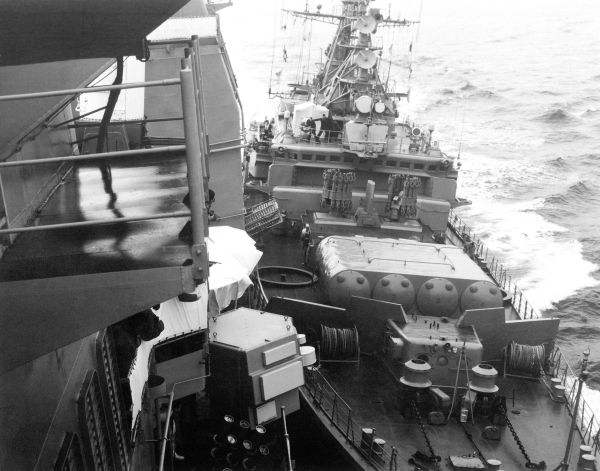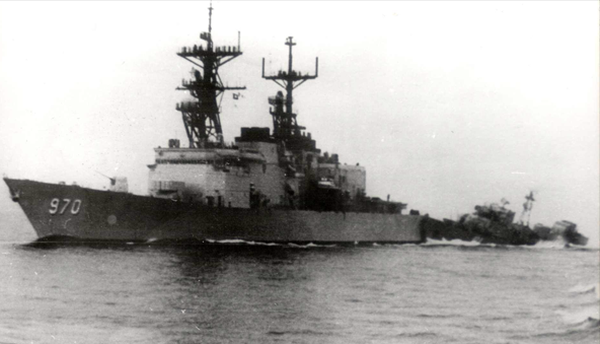The Cold War was slowly coming to an end and the relations between the USSR and the USA were pacified but old tensions and animosities remained unabated.
In the beginning of 1988, cruiser USS Yorktown (DDG-48/CG-48) and destroyer USS Caron (DD-970) were dispatched in the Black Sea as part of the Freedom of Navigation Program.
On 12 February USS Yorktown and USS Caron were operating within the 12-mile territorial limit claimed by the Soviet Union. Ships entered the Russian territorial waters near Pharos at Crimea.
US ships were challenged by a Soviet ships frigate Bezzavetnyy (FFG 811) and SKR-6. Soviet commander warned American ships about their course and that if they continue on it, Soviet ships will prevent Soviet Union territorial waters incursion by any means possible.
US side responded that they will continue as planed and declined any violation of sea laws.
After US denial, Vice Admiral Valentin Selivanov gave the command to his ships to prevent US convoy from entering Soviet waters by collision. Ships should ram into hostile vessels and push them out to international waters. The Bezzavetnyy approached the Yorktown, while SKR-6 approached the Caron.
Despite another warning, American ships continued to approach the coast of the Crimea. After that final warning Soviet ships went into action. First the Bezzavetnyy hit the Yorktown’s port side, damaging the helipad, Harpoon launcher, commander’s cutter and all guardrails.
SKR-6 rammed into USS Caron and damaged its hull on the port side.
After the collision, weapon systems on both sides were armed. Onboard Bezzavetnyy RBU-6000 launchers were prepared. Two Soviet Mi-26s helicopters were flying over US ships preventing two American helicopters from taking off.
Within the hour, American ships departed Soviet territorial waters. There were no injuries on both sides during this incident. The next day, the US 6th Fleet headed to depart Soviet controlled Black Sea.

